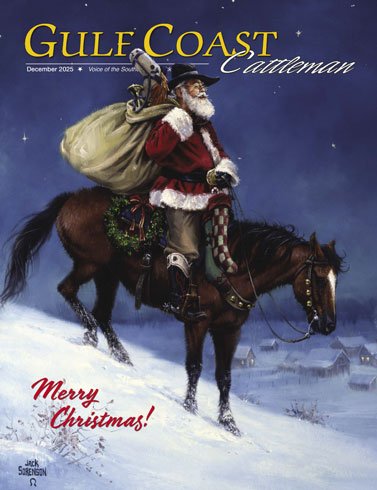Texas A&M Sets New Goals For Cattle Research
Blair Fannin, Texas A&M Extension Service
February 22, 2018
Over the past decade, dramatic weather changes such as drought and parasites have created a set of new challenges for Texas beef cattle producers.
In response, Texas A&M University’s department of animal science head Dr. Cliff Lamb hopes to tap into scientists and specialists within the department and both Texas A&M AgriLife Research and the Texas A&M AgriLife Extension Service to find new, scientific innovations to help Texas’ beef cattle producers minimize both production and economic risks.
Lamb said he is looking forward to building on the department’s long history of excellence in beef cattle teaching, research and extension education.
“We are the largest, most diverse department of its kind anywhere in the United States,” said Lamb, who took over as department head in March 2017. “We are now setting the bar higher in our quest to become international leaders in a broad range of impact areas.”
Texas leads the nation in beef cattle inventory and production statewide.Agriculture contributes $20 billion annually to the state economy with cattle receipts accounting for half the total.
“We have the capability of developing beef cattle adapted to subtropical and tropical climates, and discovering new traits and genetic adaptabilities that will certainly prepare us for the next drought or hurricane,” Lamb said. “We would like to be proactive rather than reactive.
“We can take what we already know, but also learn from our international partners. For example, beef cattle producers in Brazil are using applied reproductive management strategies like artificial insemination at a five-times-greater rate than the U.S. Those experiences we can learn from.”
Lamb, who grew up on a beef cattle operation in Zimbabwe, came to Texas A&M from the University of Florida-North Florida Research and Education Center where he was responsible for administrative oversight of beef research and extension programs.
He says beef cattle production in Texas is exposed to multiple challenges. One such issue at the forefront is the fever tick. Though kept isolated in the most southern part of Texas, Lamb has plans to enhance both AgriLife Research and AgriLife Extension efforts associated with current and future challenges, such as the fever tick.
Addressing these challenges will come through a specific faculty member appointment, he said, who will be assigned for an extended period to help lead research activities as well as beef producer education programs to better equip Texas cattle producers with knowledge and safe practices to fend off such threats.
“Of course these type of activities require financial resources and we’ve created a new beef development committee, which encompasses representatives from Texas’ largest cattle associations and industry representatives as well as beef producers who are passionate about Texas A&M,” Lamb said. “This will allow them to come to the table and help identify these critical areas.”
He said he is also looking forward to the launch of the new International Beef Academy offered at Texas A&M under the direction of Dr. Reinaldo Cook, animal science professor who recently joined the A&M faculty from the University of Florida.
“This will offer the latest cutting-edge technologies and will be available online only,” he said. “We are hoping upon the completion of this certificate program they will become ambassadors, further helping along the promotion of beef education across the country and globally.”
The teaching curriculum has also been revised, Lamb said.
“This fall, every new student will be exposed to a totally new curriculum,” he said. “A lot of our animal science majors don’t come from farms or have farm backgrounds, but they do come with more of a science base. The new curriculum will emphasize and require participation in hands-on internships and high impact learning opportunities such as study abroad and judging team participation. They will have to take two advanced discipline specific courses. We are also incorporating new capstone courses to tie everything together.”
Regarding research, Lamb said one of his goals is to find discoveries beef cattle producers can put to work right away.
“We want to do science that is both fundamental and research that is immediately applicable to beef producers, something they can go and put right to work on the ranch and to help make them more profitable,” he said.

